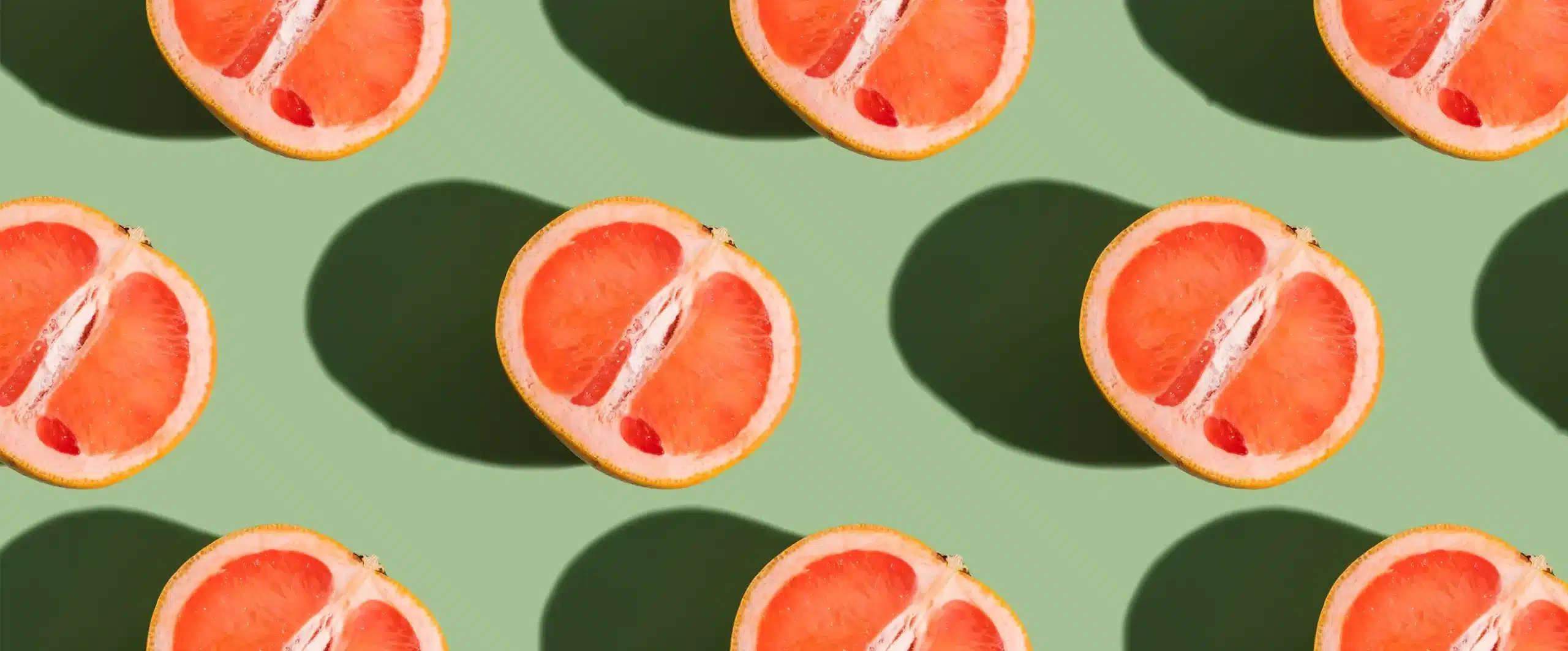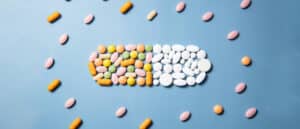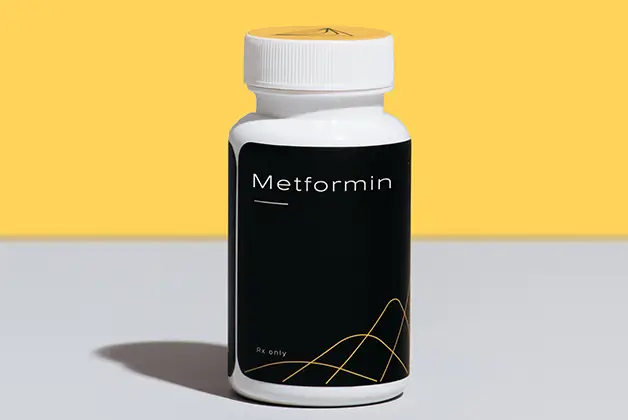5 Foods to Avoid on Metformin
Fast Facts
- Metformin is used to manage insulin resistance in diabetics, but it can also be used to treat obesity, cancer, and heart disease.
- Avoiding these five common foods and food groups will keep metformin working as it should with little to no risk.
Metformin is the world’s leading drug to help control high blood sugar in those with Type 2 Diabetes (T2D) (1). Approximately 462 million people worldwide have T2D (2), and of those, 150 million (3) are taking metformin to help manage it. On the flip-side, studies suggest that metformin slows aging and reduces aging-related diseases for non-diabetic adults, too (4).
What Is Metformin Used For?
Diabetes
For folks with T2D, the main issue is that regardless if they are in a fed or fasted state, the body is insulin resistant and the liver continues pumping glucose into the blood through a process called glycogenolysis, raising blood sugar levels, even when it shouldn’t. Basically, the “off-switch” is broken.
Simply put, metformin flips that switch back into the normal position and stops the body from producing glucose unnecessarily. It reduces both the amount of glucose your liver produces and glucose you get from the food you eat, and it also stimulates the body’s response to insulin (3).
Metformin is prescribed by doctors at a rate of 45 to 55 percent compared to any other antidiabetic medication (5) because it’s affordable, accessible, the risks are nominal, and it works, according to Dr. Ketan Dhatariya, a consultant in diabetes and endocrinology and honorary professor of medicine at the University of East Anglia in Norwich, UK.
Longevity
Metformin is already used in non-diabetic patients to treat obesity, cancer, and heart disease. Emerging research suggests that in healthy people it may also help with weight loss, inflammation, and cancer prevention.
Data from animal studies suggests that metformin may also delay the effects of aging or increase lifespan (6). Currently, large clinical trials involving people are being planned to determine, which, if any, anti-aging benefits may extend to humans.
Sounds like a slam dunk if you were just handed a prescription for metformin but there are some good-to-know facts about this reigning antidiabetic and longevity drug. If you’re wondering what you should and shouldn’t eat while taking metformin or whether or not you can drink alcohol, read on for the full lowdown on metformin.
1. Alcohol
Mixing Metformin and alcohol can be well tolerated in moderation but doctors warn against consuming alcohol if you have a history of alcohol abuse or binge drinking. The reason for this is two-fold.
When taking metformin, there is a rare yet potentially dangerous risk of lactic acidosis, which is a buildup of lactic acid in the liver that can lead to serious kidney failure, as well as damage to the lungs and heart. The problem with drinking alcohol is that it also creates acid buildup in the liver, further exacerbating the risk for lactic acidosis (7).
Metformin doesn’t have many commonly-experienced side effects, however, one predominant reaction to the drug is digestive upset (more on that in a bit). Because alcohol also causes gastrointestinal upset in some people, combining the two could have major digestive implications (8).
2. High-Fiber Foods
We’re used to thinking of fiber as a good thing, and for the most part, it is—except maybe when taking metformin. According to the University of Michigan, high-fiber foods may make the drug’s job harder. Researchers posit that exceeding 30 grams of fiber in a day may lower metformin levels in the body due to the fact that fiber binds to the drug and reduces its efficacy. (9) So it may be best to avoid high-fiber foods like oatmeal, chickpeas, avocado, berries, peas, beans, and chia seeds.
It should be noted that research around high-fiber foods interacting with metformin is relatively light, which makes the case for further studies in the future.
3. Simple Carbs
Refined carbohydrates like white breads, rice, bagels, and pasta all send your blood sugar soaring in a matter of minutes. And researchers discovered that not only do simple carbs increase blood sugar levels, but they also increase the risk for T2D (10,11).
When you consider that diabetes patients already have a problem controlling blood sugar and about 1 in 3 with T2D take metformin to help control it, it’s common sense that flooding your system with empty carbs that send your blood sugar levels to space is probably not a great idea.
Instead, stick to slower-digesting whole grains that contain more vitamins and minerals, such as whole-wheat and whole-grain pasta and bread, quinoa, brown rice, millet, and more. They’re more nutrient-dense and maintain steady blood sugar levels.
Though there is little research on carbohydrate type as it relates to metformin specifically, the best carbohydrates for T2D have been well-researched, making complex carbs the natural choice for those with trouble regulating blood sugar (11).
4. Bad Fats
There’s a reason why we’ve come to know fats in two camps: good and bad. The good guys are your monounsaturated and polyunsaturated fats, while the bad guys are the indisputable and infamous trans fats. Saturated fats are somewhere in the middle for nondiabetic folks, but they have some diabetic-specific implications that may affect insulin and should be avoided, which we’ll cover shortly.
So what does fat type have to do with your success on metformin? It comes down to how fats behave in the body. Saturated fat found in butter, cheese, and high-fat meats like bacon and sausage—has been shown to significantly worsen insulin resistance which is one of the problems you may be trying to solve with metformin. As far as trans fats go, while they’ve been studied for their effect on insulin resistance, the research remains inconclusive (12).
Not only do simple carbs increase blood sugar levels, but they also increase the risk for T2D.
5. Grapefruit
Here’s one you may want to take with a grain of salt, but might still avoid if you’re a better-safe-than-sorry type.
It’s fairly well known that grapefruit interacts with many medications. Grapefruit whole or juiced cannot be combined with statins, blood pressure drugs, antihistamines, anti-anxieties, and many more (85 medications in total) (13).
That’s because some chemicals found in grapefruit interact with the enzymes in our liver and gut that help to break down medication. When the enzymes don’t work properly, the drug goes into your bloodstream in its most potent form, increasing your risk for overdose.
But here’s where things get a wishy-washy: There’s only been one 2009 study examining grapefruit’s effect on metformin and it was done on non-diabetic rats (14). In the study, the rats ingested either metformin on its own or combined with grapefruit, and those that were given the combo experienced lactic acid buildup in their liver.
If you recall, lactic acidosis is a very rare yet dangerous risk factor of metformin. The researchers hypothesized the same results observed in rats could apply to people with T2D taking metformin, but a human trial is still needed.
Another thing to note is that unlike the drugs listed above, metformin doesn’t get broken down by enzymes but instead travels through the body unprocessed before being excreted unchanged, in our urine (15). Again, it’s safe to say that more research is needed here.
Metformin, now available from Hone, may help you ward off age-related illnesses. Connect with a doctor and get treatment delivered—without leaving home.
When Should You Take Metformin?
Doctors say that metformin should always be taken with meals. Dr. Dhatariya explains that the diabetic liver continues pumping out glucose whether you’re in a fed or fasted state. The whole idea of the broken “off-switch” is that metformin comes in to fix that switch and stops the liver from making glucose when you’ve just eaten—just as it does with those who don’t have T2D.
“You want the liver to store the excess energy when you’ve eaten. There’s no point in taking it several hours after you’ve eaten because there’s no glucose left in the liver—it’s all gone,” he says. “The idea is to stop the liver from inappropriately producing glucose in the fed state. You want the drug to be on-site at the right place at the right time when the glucose concentrations are highest, to allow the liver and the muscles to suck the glucose in and to store this glycogen at the right time.”
The Bottom Line
Metformin is a widely used drug with low risks and a high success rate, but it’s always prudent to be cautious when consuming certain foods or drinks that have a potential risk of drug interaction. Always consult with your doctor about considerations of what to eat and drink when starting a new medication.
References
1. Khan, Moien Abdul Basith et al. (2020). “Epidemiology of Type 2 Diabetes – Global Burden of Disease and Forecasted Trends.”
2. Drzewoski, Józef et al. (2021). “The Current and Potential Therapeutic Use of Metformin-The Good Old Drug.”
3. MedlinePlus. “Metformin: MedlinePlus Drug Information.”
4. Mohammed, Ibrahim et al. (2021). “A Critical Review of the Evidence That Metformin Is a Putative Anti-Aging Drug That Enhances Healthspan and Extends Lifespan.”
5. Statista. (2022). “Number of metformin hydrochloride prescriptions in the U.S. from 2004 to 2019.”
6. Wang, Yi-Wei et al. (2017). “Metformin: a review of its potential indications.”
7. Prescriber’s Digital Reference. “Metformin hydrochloride – Drug Summary.”
8. Brown, Kelly. (2022). “Don’t Mix Metformin and Alcohol (Learn the Dangers).”
9. Krishnan, Supriya et al. (2007).“Glycemic index, glycemic load, and cereal fiber intake and risk of type 2 diabetes in US black women.”
10. Villegas, Raquel PhD. (2007). “Prospective Study of Dietary Carbohydrates, Glycemic Index, Glycemic Load, and Incidence of Type 2 Diabetes Mellitus in Middle-aged Chinese Women.”
11. Riccardi, G et al. (2004). “Dietary fat, insulin sensitivity and the metabolic syndrome.”
12. Aronis, Konstantinos N et al. (2012). “Effects of trans fatty acids on glucose homeostasis: a meta-analysis of randomized, placebo-controlled clinical trials.”
13. Bailey, David G. BScPhm PhD et al. (2013). “Grapefruit–medication interactions: Forbidden fruit or avoidable consequences?“
14. Owira, P M O et al. (2009). “Grapefruit juice improves glycemic control but exacerbates metformin-induced lactic acidosis in non-diabetic rats.”
15. Gong, Li et al. (2012). “Metformin pathways: pharmacokinetics and pharmacodynamics.”















